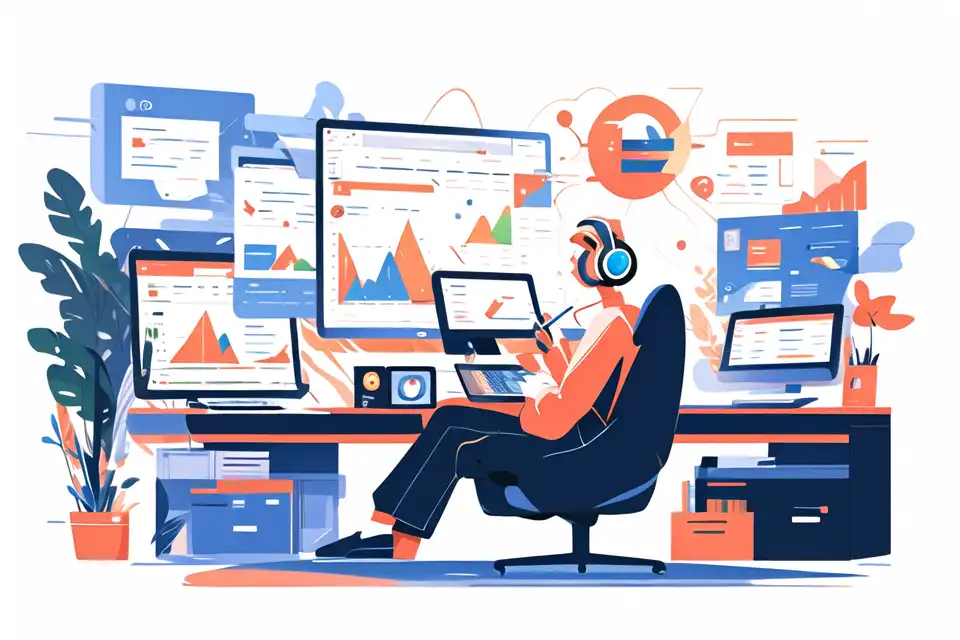Fallback Plan for Design and User Experience Teams
Explore fallback plan for design and user experience teams, ensuring efficiency and successful project management outcomes.
Try Lark for Free
Integrating a fallback plan into the workflow of design and user experience teams is essential for ensuring streamlined project execution and user satisfaction. This article aims to illuminate the crucial aspects of fallback plans, their implementation, and the potential pitfalls to mitigate in the realm of design and user experience.
Leverage Lark for project management within your team.
Understanding fallback plans
A fallback plan, also known as a contingency plan, is a predefined strategy that outlines alternative actions to be taken if anticipated events or circumstances threaten the viability of a project. In the context of design and user experience teams, a fallback plan serves as a safety net to minimize disruptions and ensure the continuous delivery of high-quality user experiences.
Benefits of fallback plans for design and user experience teams
Enhancing Project Resilience
Incorporating a fallback plan into the operational framework of design and user experience teams can yield several benefits. Firstly, it enhances project resilience by providing a structured approach to handle unexpected challenges. By preemptively identifying potential risks and devising strategies to address them, design and user experience teams fortify their ability to navigate uncertainties and maintain project momentum.
Minimizing Risks in Implementation
Furthermore, a well-crafted fallback plan minimizes the risks associated with the implementation of design and user experience initiatives. It facilitates a proactive response to unanticipated setbacks, thereby reducing the impact of disruptions on project timelines and deliverables. This proactive stance fosters confidence among team members and stakeholders, instilling a sense of preparedness and adaptability.
Mitigating User Impact
Another significant advantage of a fallback plan is its potential to mitigate the impact on end users. In the event of unforeseen issues affecting design or user experience elements, having a contingency strategy in place allows teams to swiftly address and rectify issues, thereby safeguarding the user experience. This proactive approach reinforces user trust and loyalty, underlining the critical role of fallback plans in maintaining seamless interactions between users and digital interfaces.
Steps to implement fallback plans for design and user experience teams
Successful implementation of a fallback plan requires careful consideration of various aspects within the realm of design and user experience.
Establishing Clear Guidelines and Objectives
- Define Scope: Clearly outline the scope of the fallback plan to encompass diverse scenarios that may affect design and user experience projects.
- Establish Objectives: Identify the primary objectives of the fallback plan, emphasizing the preservation of project continuity, user-centric solutions, and alignment with organizational objectives.
Identifying Key Decision Makers
- Stakeholder Identification: Determine the key stakeholders and decision makers who will be responsible for activating and executing the fallback plan.
- Communication Protocols: Establish effective communication channels to ensure prompt decision-making in critical situations.
Creating Protocols for Rapid Response
- Response Team Formation: Formulate a dedicated response team tasked with assessing emergent situations and executing the fallback plan as needed.
- Protocols and Procedures: Develop clear protocols and procedures to guide the response team, ensuring swift and effective action in alignment with the fallback plan.
Regularly Testing and Evaluating the Fallback Plan
- Scenario Simulation: Conduct periodic simulations of potential scenarios to test the efficacy of the fallback plan and identify areas for improvement.
- Continuous Refinement: Embrace a culture of continuous improvement, wherein the fallback plan is regularly refined based on evolving project requirements, technological advancements, and user feedback.
Learn more about Lark Project Management for Teams
Common pitfalls and how to avoid them in design and user experience teams
Lack of Clear Communication Channels
One common pitfall in implementing fallback plans for design and user experience teams is the lack of clear communication channels. This can impede the swift dissemination of critical information and decision-making during disruptive events.
To counter this pitfall:
- Establish a designated communication protocol outlining lines of communication, reporting structures, and escalation paths.
- Conduct regular drills and simulations to validate the effectiveness of communication channels under different scenarios.
Overlooking Scalability Requirements
Another potential pitfall is overlooking scalability requirements, which may lead to an ineffective fallback plan during significant scale events.
To avoid this pitfall:
- Incorporate scalability assessments into the fallback plan, ensuring that it can adapt to varying degrees of impact and project complexities.
- Utilize scalable technologies and solutions within design and user experience initiatives to align with the fallback plan's requirements.
Inadequate User Feedback Integration
Failing to integrate user feedback into the fallback plan can hinder its responsiveness to evolving user needs and expectations, impacting the effectiveness of implemented fallback strategies.
To address this pitfall:
- Engage in continuous user feedback collection and analysis to inform the refinement and adaptation of the fallback plan.
- Leverage user-centric design principles to align fallback strategies with user preferences and experiences.
Learn more about Lark Project Management for Teams
Leverage Lark for project management within your team.








